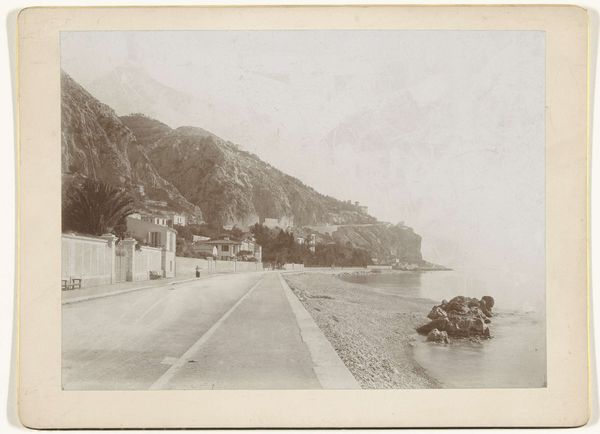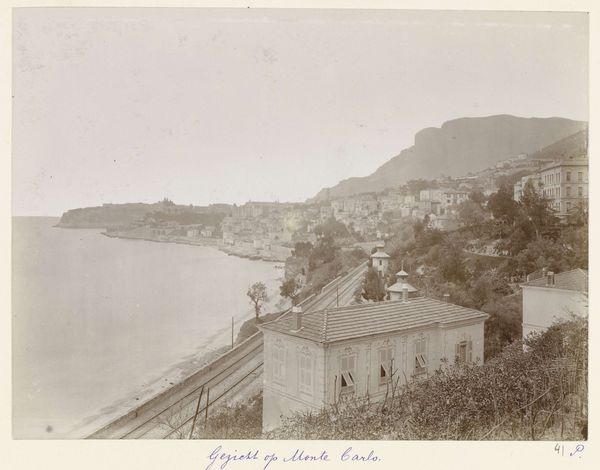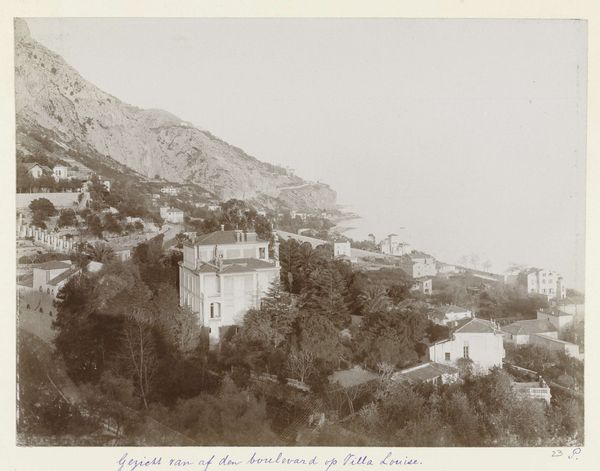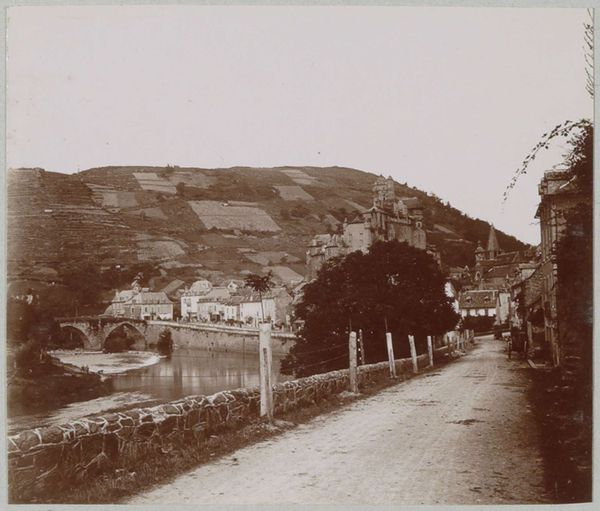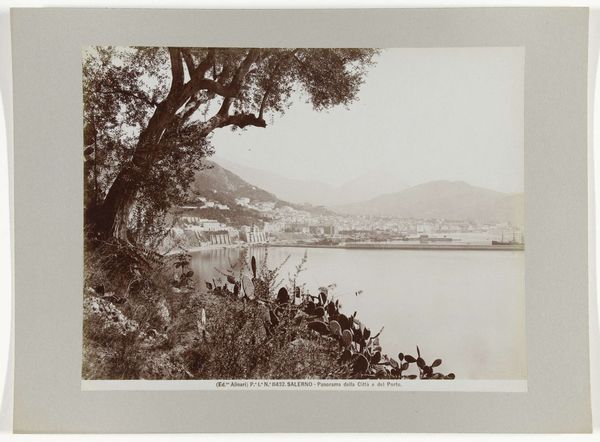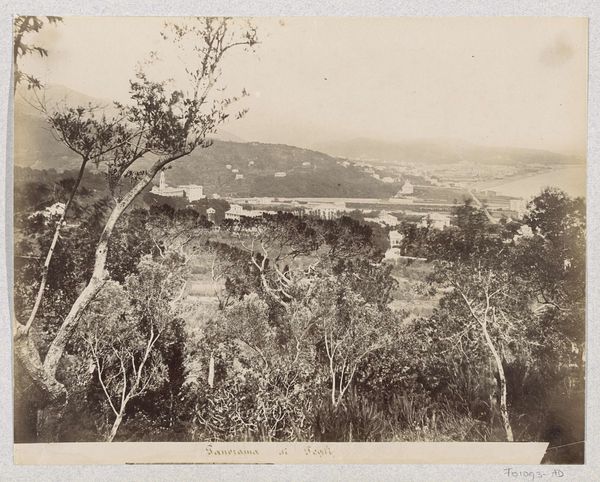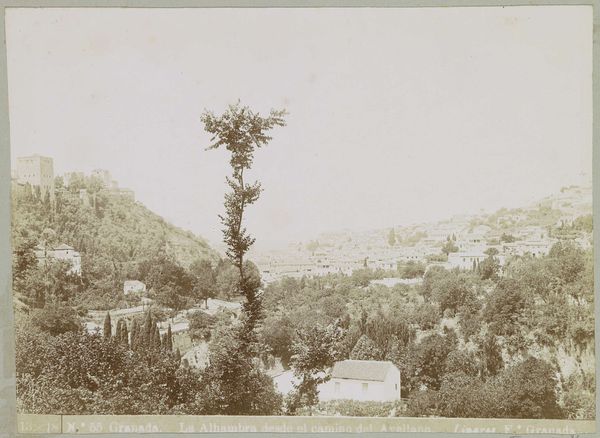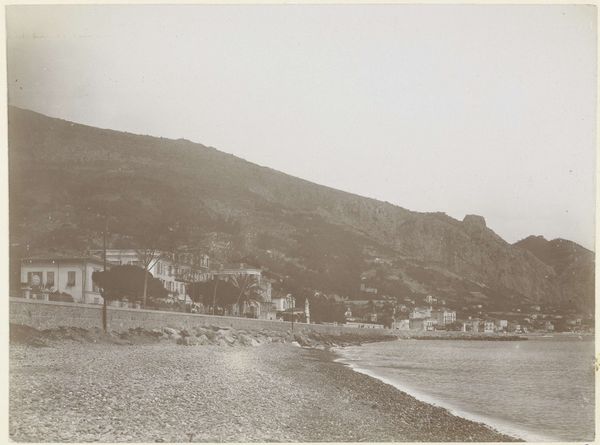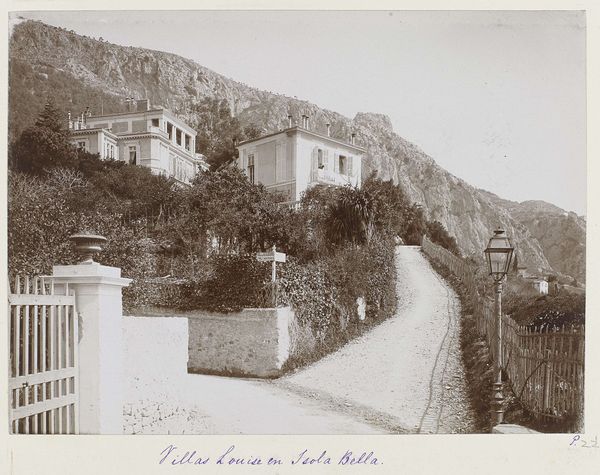
Gezicht op Monte Carlo vanaf de weg tussen Monte Carlo en Menton c. 1886 - 1896
0:00
0:00
photography
#
pictorialism
#
landscape
#
street-photography
#
photography
#
cityscape
Dimensions: height 164 mm, width 222 mm, height 322 mm, width 498 mm
Copyright: Rijks Museum: Open Domain
Curator: This photograph, taken sometime between 1886 and 1896, presents a view of Monte Carlo from the road leading to Menton. It’s attributed to Henry Pauw van Wieldrecht. Editor: It evokes a rather melancholic mood, doesn’t it? The sepia tones and soft focus give it a dreamlike quality. The strong diagonal of the road divides the composition almost brutally. Curator: Yes, there's a subdued quality to the light, characteristic of pictorialism. Consider the delicate rendering of tones, creating atmosphere and depth through subtle variations of light and shadow. The diagonal does indeed organize the landscape: the gaze is forced to acknowledge not only a receding space, but also a visual metaphor for progression, and even privilege as one can see in the urbanized landscape it depicts. Editor: I think the framing invites a dialogue on access. The curving road on the right offers a perspective of established infrastructure – the stone walls feel deliberately positioned; whereas on the left the more intimate presence of the coastline, and its railway line and beach, offer more open modes of access for leisure and transit. The stark telephone pole slices through this narrative to further expose modern connectivity to places of play. Curator: Interesting point! Formally, the composition’s power relies precisely on such tensions – a division between nature and artifice—and on what we expect from street photography: a slice-of-life view is here deliberately complicated by a rather soft focus, a rather artificial graininess, all in service of artistic effect. Editor: Looking at that horse-drawn cart, one can imagine how limited upward mobility really was in that era and region, or consider even the labour needed to quarry those stones along that upper wall. To present the scene as one of calm idyll perhaps overlooks a stratified, labour-intensive social reality. Curator: Perhaps, but within that very artificiality, the artist seems to gesture to something beyond the representational. And it’s in the work’s complex geometry that this photograph achieves much more than simple topography. Editor: And by questioning that idyllic facade we might come closer to recognizing its ideological underpinnings. Thank you. Curator: A fitting perspective, thank you.
Comments
No comments
Be the first to comment and join the conversation on the ultimate creative platform.
